The emblems and patches of famous soccer teams are not only the symbolic logos of the teams, but also the visual carriers of soccer culture. Each team’s logo unites its historical tradition, regional characteristics and cultural connotations, and has become an important way for fans to express their loyalty and identity. We will delve into the evolution of team logo design, cultural significance and patch collection market of world famous soccer clubs, providing comprehensive reference for soccer culture enthusiasts and collectors.
Designs and Historical Evolution of World Famous Football Team Logos
The Real Madrid crest
The Real Madrid crest is rich in history and symbolism:
- Initial design: In 1902, Real Madrid’s first crest was a simple one, consisting of the three initials of the club’s name – MCF (for Madrid Football Club) – with dark blue text on a white background.
- Addition of the title “Royal”: In 1920, before King Alfonso XIII of Spain granted the title “Royal”, the crest could not be added to the team’s emblem to represent the meaning of “Royal”. Once the title was granted, the crown element was officially incorporated into the design of the crest[15].
- Evolution of design: The design of the crest has evolved as the club has grown, reflecting the history of European royalty and republicanism.
Real Madrid’s team crest carries the long-standing glory and tradition, and has become an important part of the fans’ culture, and its design has also become a visual symbol of the club’s history.
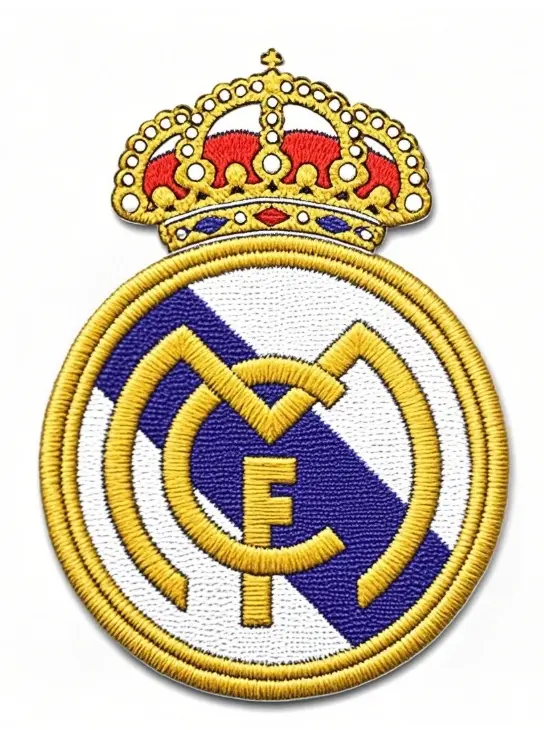
Barcelona crest
The design of the Barcelona crest incorporates elements of Catalan culture:
- Initial design: The original Barcelona crest consisted of a heraldic lozenge surrounded by a green wreath with a golden crown and a winged black bat above it. The background of the lozenge is red, yellow and white.
- Catalan cultural symbols: the design at the top of the crest is the St. George’s Cross, known as the “St. Jordi Cross” in Catalonia, Spain. The legend of St. George, the joint patron saint of England and Catalonia, is of great significance in this land of history.
- Design concept: The Barcelona crest was originally designed as a tribute to the city of Barcelona. In 1910, Barcelona decided to design a dedicated crest for the club, driven by club president Gamble, who selected the final proposal from a design competition.
The Barcelona crest is not only a symbol of the club’s identity, but also a visible expression of Catalan culture, reflecting the concept of “more than a club”.
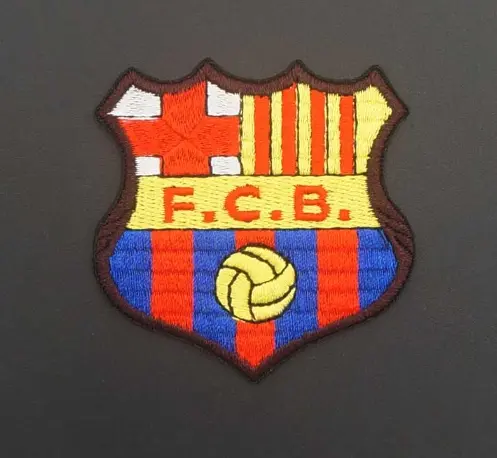
Manchester United crest
The evolution of the Manchester United crest reflects the history of the club:
- Early stages: In the late 19th century, shortly after its foundation, Manchester United used a relatively simple small circle as its identity.
- The introduction of the “Red Devil”: In 1973, the devil with a trident officially replaced the three bars in the United crest. The design not only symbolized United’s dominance on the pitch, but also alluded to Manchester’s dominance in the maritime sector.
- Modern design: In 1998, Manchester United introduced the latest version of the crest, incorporating a redesigned Red Devils and Merchant Navy motif, in a cleaner color scheme with a gradient of contrasting colors on both sides.
- Internationalization strategy: Shortly before the new millennium, the words “Football Club” disappeared from the club’s logo and were replaced by the word “United” in an effort to make the brand more international.
The evolution of the Manchester United crest reflects the club’s transformation from a local club to a global brand.

Arsenal crest
The design of the Arsenal crest reflects the club’s history and regional identity:
- The artillery element: the main body of the crest is a shield with a red and blue background and a cannon in the center, echoing the name of the team, “The Arsenal”.
- Change of direction: It was not until 2002 that the cannon on the Arsenal crest began to face east, symbolizing that the club would always be looking forward and looking to the future. Prior to this, the direction of the cannon on the Arsenal crest had changed frequently over the previous 81 years.
- Retention of traditional elements: To celebrate the 125th anniversary of the club’s foundation in the 2011/2012 season, Arsenal adopted a new crest design, incorporating elements from the original 1888 crest, including fifteen oak leaves to symbolize the club’s creators and fifteen laurel leaves to represent the club’s achievements.
The artillery on the Arsenal crest is the club’s most recognizable symbol and a visual representation of the nickname “The Arsenal”.
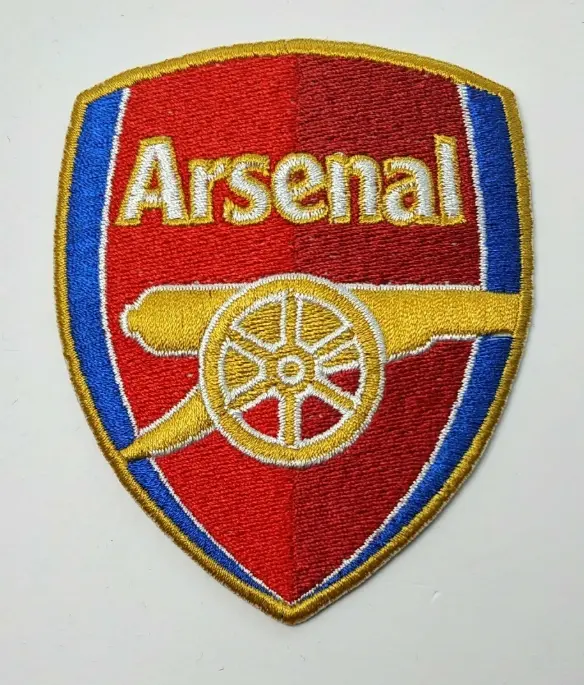
Bayern Munich crest
The design of the Bayern Munich crest has evolved several times:
- Early design: From 1906 to October 1919, the club, then known as Munich SC, used a version of the crest with BAYERN and F.A. as its main characters.
- Standardization: From 1961 to the present day, FC Bayern München has changed its logo five times to make it more standardized.
- Typography: In the 1996-2002 version, FC Bayern München designed and used a new typeface, making the emblem more independent.
- Cultural symbols: The blue and white stripes in the Bayern Munich crest symbolize the unity and cooperation between the members of the team, which stems from the core philosophy of “loyalty, solidarity and progress” that the team has always upheld throughout its history.
The evolution of the Bayern crest reflects the club’s transformation from a local club to a top German soccer club.
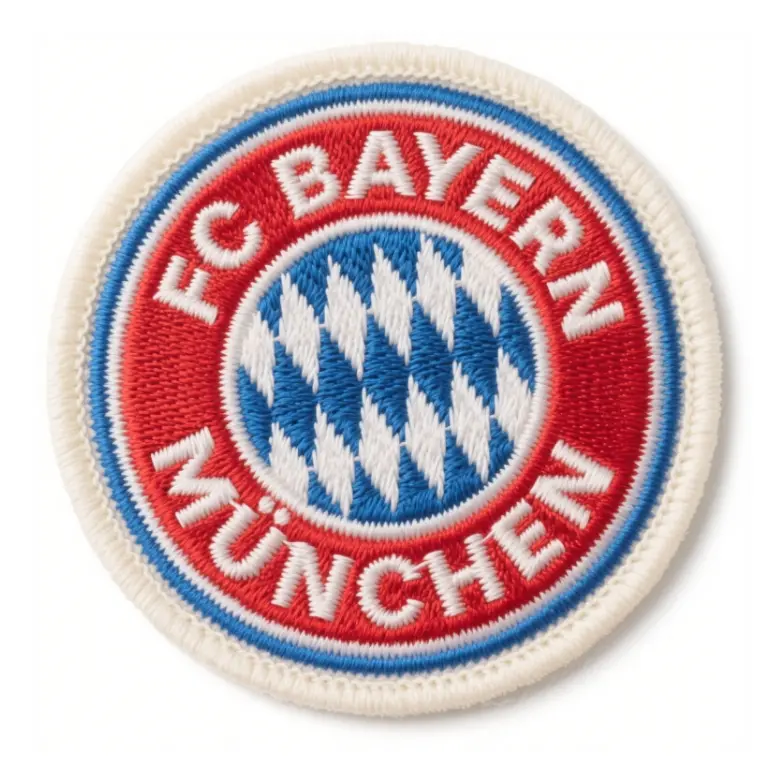
Liverpool crest
The design of the Liverpool crest incorporates the club’s history and cultural symbols:
- Key elements: the key elements of the Liverpool crest include the Flame, the Liver Bird, the Shankly Gate, and “You’re Never Alone”.
- Historical legacy: the team crest launched in 2019 to celebrate the 125th anniversary of the club’s founding brings together a number of historical elements that have caught the eye of countless fans. From the original Liverpool city crest to the famous ‘You’ll Never Walk Alone’, the crest showcases the club’s heritage.
- Cultural significance: The flames symbolize the rebirth of the club after the Hillsdon disaster of the 1960s and reflect the resilience of the club.
- Visual upgrade: The visual upgrade of Liverpool FC’s crest complements the club’s illustrious history to date, demonstrating its attitude to improvement and innovation.
The Liverpool crest is not only the club’s visual identity, but also a symbol of the club’s spirit and culture.
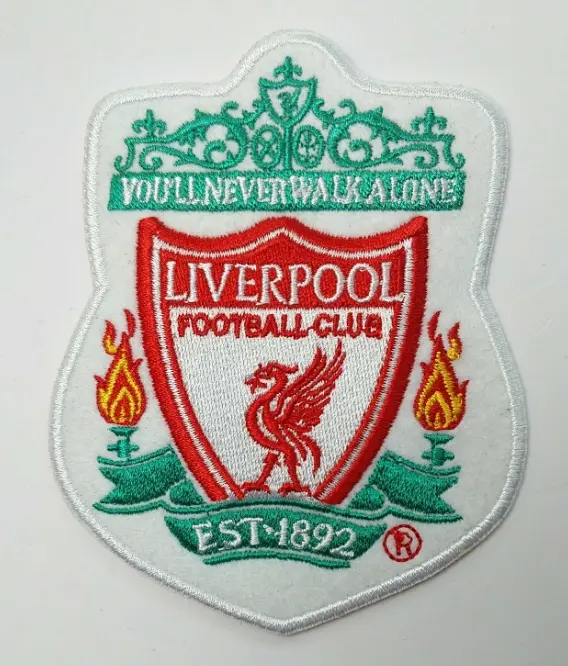
Cultural significance of soccer team logos
Symbol of regional tradition
Soccer team logos, as the visual identity of the club, often incorporate cultural elements of the region in which they are located, becoming a symbol of regional tradition:
- Heraldic tradition: Many English team logos still adhere to the traditional way of badge design, such as Newcastle United, with a black-and-white coat of arms in the center, and seahorses on the left and right as shield beasts, which symbolize the maritime industry on the city’s coat of arms .
- Historical change: in the history of soccer, the team crest as a symbol of the club and even the region in which the club is located, has its own history of change with the changing times. This change has its similarities, but also has its own unique evolution .
- Geographical characteristics: The design of the German soccer team’s emblem blends the national symbols of Germany with the athletic nature of soccer. The original design elements included the image of the black eagle in the German national emblem, representing strength, resilience and independent spirit .
The soccer team emblem is not only the logo of the club, but also a cultural symbol of the region in which it is located, carrying rich regional characteristics and historical traditions.
Visual expression of club history
The design of team logo usually integrates the historical elements of the club and becomes the visual expression of the club’s history:
- Balance of tradition and modernity: Compared with the logo and VI design of commercial brands, soccer clubs not only pay attention to the trend of the times and pioneering connotations, but also pay more attention to history and tradition in the treatment of team emblems.
- Heavy sense of history: many clubs have more complicated designs for their team crests, which emphasize a heavy sense of historical precipitation and convey the club’s history and tradition through visual elements.
- Expression of cultural genes: Barcelona’s crest, while symbolizing the identity of the soccer club, is also a visible expression of the cultural genes of Catalonia. The club has always emphasized the idea of being “more than a club”, linking soccer to society, culture and history.
The design of the emblem usually integrates the historical elements of the club and becomes a visual expression of the club’s history and tradition, carrying a rich cultural connotation.
Influence of commercial culture
With the deep development of soccer professionalization, team badge design is also influenced by commercial culture:
- The trend towards corporatization: soccer badges may follow the trend towards corporate simplification, but they always follow the trend. Redesigns of team badges are very common in soccer, and simple designs are not uncommon. For example, the Real Madrid crest in the 1910s looked very different from the modern design .
- Internationalization considerations: Shortly before the new millennium, the words “Football Club” disappeared from the Manchester United logo and were replaced by the word “United” in an effort to make the brand more international.
- Balance between culture and business: The design of the crest needed to balance the needs of tradition and modernity, regional identity and internationalization, preserving the historical heritage and adapting to modern business needs.
The design of the team logo needs to adapt to modern commercial needs while preserving the tradition, which reflects the transformation process of soccer from amateur sport to professionalization and commercialization.
Design and production of jersey patches
Design elements for patches
The design of a jersey patch requires consideration of several factors, including readability, visual appeal and brand consistency. A well-designed patch should:
- Use high contrast colors to ensure numbers and logos are clearly visible
- Consider the visual impact of the player’s movement
- Be consistent with the overall team image and branding
Patch production process
Modern jersey patches are made using a variety of processes, including:
- Thermal transfer technology: the pattern is transferred onto the fabric using high temperatures
- Embroidery: embroidery patches a traditional process where the design is embroidered onto the fabric by means of a sewing machine
- 3D flocking: customized 3D flocking tatami fabric for sports soccer team club jerseys
The future of jersey patches
Technological Innovation
With the development of technology, the design and production of jersey patches are constantly innovating. For example, emerging technologies such as heat transfer printing sports soccer team club jersey 3D flocked tatami fabric customized bring new possibilities for jersey patches .
Sustainability
Environmental protection and sustainability have become important issues in modern soccer, which will also affect the design and production of jersey patches. More environmentally friendly materials and processes for the production of jersey patches may emerge in the future.
Soccer team patches are not only a simple logo on soccer jerseys, but also an important part of soccer culture. From design specifications to commercial value, from historical legacy to technological innovation, jersey patches carry rich cultural connotations and commercial value. With the continuous development of soccer, jersey patches will continue to evolve and become an important link between teams, players and fans.




